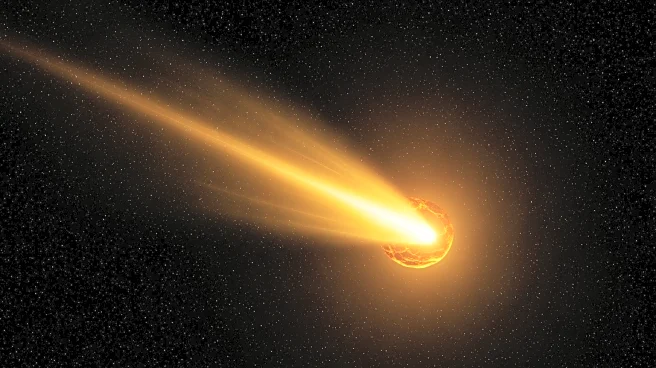What's Happening?
The recently discovered comet C/2025 K1 (ATLAS) has developed a golden glow after surviving a close approach to the sun. Initially believed to be at risk of disintegration due to the sun's gravitational
pull, the comet has instead transformed into a golden ribbon. This rare coloration is attributed to the depletion of carbon-bearing molecules in the comet's coma, although the exact cause remains uncertain. The comet's survival and unique appearance have intrigued astronomers and astrophotographers.
Why It's Important?
The transformation of C/2025 K1 (ATLAS) provides a unique opportunity to study the chemical composition and behavior of comets under extreme conditions. Understanding the factors that contribute to the comet's rare coloration could offer insights into the processes affecting cometary bodies during solar encounters. The comet's survival also challenges previous assumptions about the fragility of such objects when exposed to intense solar radiation.
What's Next?
Astronomers will continue to observe C/2025 K1 as it approaches its closest point to Earth on November 25. The comet's visibility will allow for further study of its composition and behavior, potentially revealing more about the mechanisms behind its golden hue.












